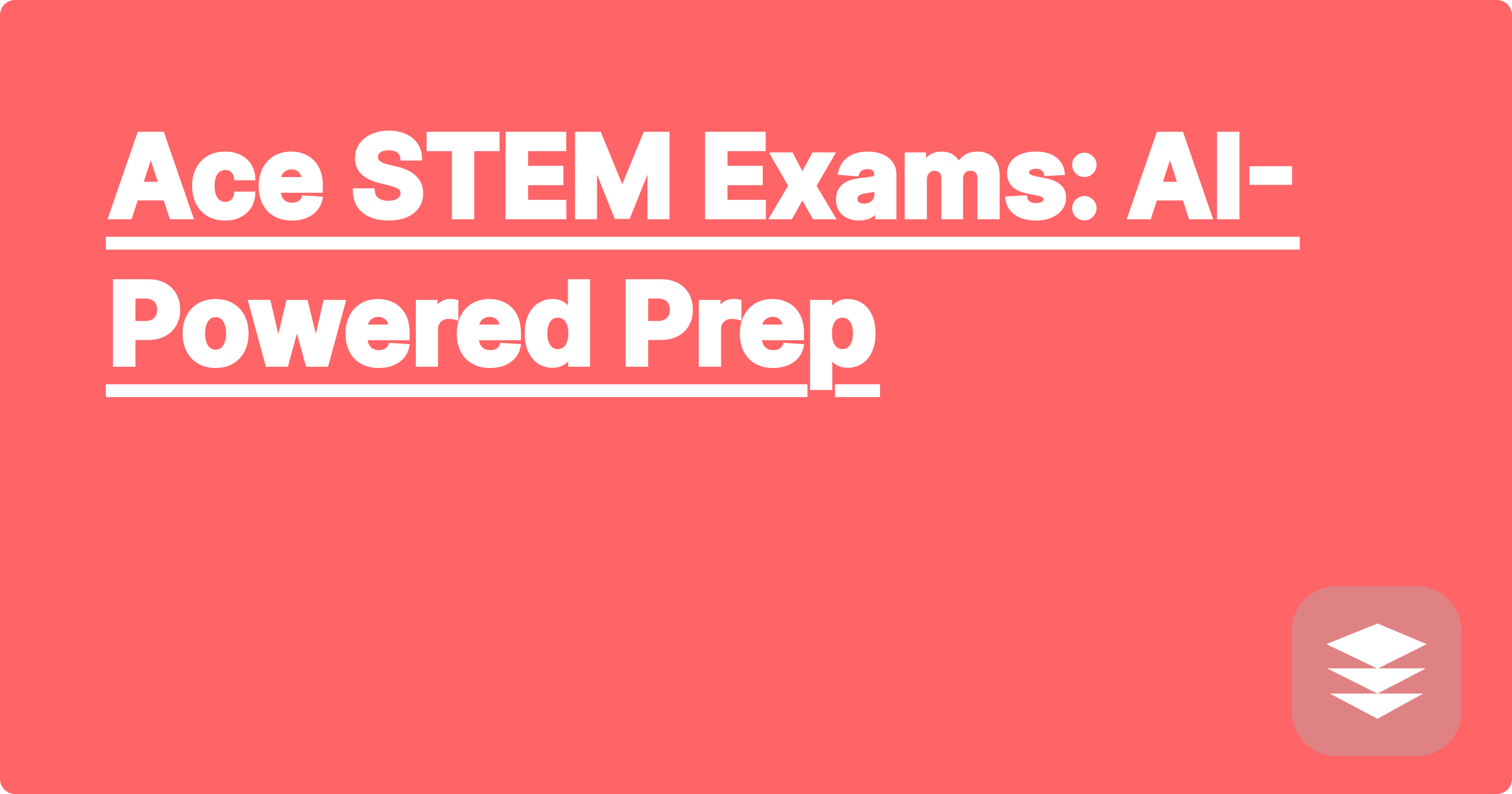
The pressure to excel in STEM fields is immense. Students and researchers face a constant barrage of complex concepts, demanding coursework, and rigorous examinations. Traditional study methods often fall short, leaving students feeling overwhelmed and underprepared. However, a new era of learning is emerging, powered by the transformative potential of Artificial Intelligence (AI). AI-driven tools are no longer just futuristic concepts; they are readily available resources that can revolutionize how STEM students approach learning and exam preparation.
This blog post delves into the exciting world of AI-powered research design optimization, specifically focusing on how AI can enhance the efficiency of the entire research process. We'll move beyond simply using AI as a problem-solving tool and explore its capabilities in experimental design and simulation optimization. This approach offers a significant advantage for STEM students, allowing them to conduct research more effectively and achieve better results. We'll explore how Generative Pre-trained AI (GPAI) tools can be integrated into this process, opening up new possibilities for research design and analysis.
Designing effective research is a crucial skill for any STEM student. Traditional methods for experimental design, like Design of Experiments (DOE), can be complex and time-consuming. Determining the optimal parameters for an experiment often involves numerous iterations and a deep understanding of statistical principles. Similarly, running simulations to optimize designs requires significant computational resources and expertise in specific simulation software. This can be a major hurdle for students, particularly those working on complex projects with limited resources. Furthermore, analyzing large datasets and extracting meaningful insights can be challenging, even for experienced researchers. These challenges highlight the need for more efficient and accessible tools for research design and optimization.
AI offers a powerful solution to these challenges. GPAI tools like large language models (LLMs) such as ChatGPT and Claude, along with computational knowledge engines like Wolfram Alpha, can significantly streamline the research design process. These tools can assist with everything from formulating research questions and hypotheses to designing experiments and analyzing data. For instance, LLMs can help students brainstorm potential research topics, refine their research questions, and even generate initial literature reviews. Wolfram Alpha can be invaluable for performing complex calculations, generating visualizations, and exploring different mathematical models. By integrating these AI tools into their workflow, students can save valuable time and resources, allowing them to focus on the core aspects of their research.
Implementing AI in your research design starts with clearly defining your research question. Use an LLM like ChatGPT to explore related research areas and refine your hypothesis. Once you have a well-defined research question, you can use AI-powered DOE software to design your experiments. Input your experimental factors and desired outcomes, and the software will suggest the optimal experimental setup. This eliminates the need for manual calculations and significantly reduces the risk of experimental error. Next, use AI-powered simulation platforms to optimize your designs. These platforms can simulate various scenarios and identify the optimal design parameters based on your specified objectives. Finally, analyze your experimental data and simulation results using AI-powered data analysis tools. These tools can identify patterns, trends, and anomalies in your data, helping you draw meaningful conclusions from your research.
Consider a student researching the efficiency of different solar panel designs. They could use an LLM to gather information on existing solar panel technologies and identify potential areas for improvement. Then, using an AI-powered DOE software, they could design an experiment to test the performance of different panel configurations under various environmental conditions. They could further refine their designs using an AI-powered simulation platform that models the interaction of sunlight with different materials. Finally, they could analyze their data using an AI-powered tool to identify the most efficient design. Another example is a student researching the effectiveness of a new drug. AI can be used to model the drug's interaction with the human body, predict its efficacy, and optimize its dosage.
Leveraging AI effectively requires a strategic approach. First, understand the capabilities and limitations of different AI tools. LLMs are excellent for brainstorming and generating text, but they shouldn't be used as a replacement for critical thinking. Computational knowledge engines are powerful for calculations and data analysis, but they require accurate input data. Second, always validate the output of AI tools. Double-check calculations, verify information against reliable sources, and ensure that the results align with your understanding of the subject matter. Third, be mindful of ethical considerations when using AI. Avoid plagiarism, cite your sources properly, and acknowledge the use of AI tools in your work.
In conclusion, AI is transforming the landscape of STEM education and research. By embracing these powerful tools, students can enhance their learning, streamline their research process, and achieve greater academic success. Start exploring the various AI tools available and experiment with different approaches to find what works best for you. The future of STEM learning is here, and it's powered by AI. Embrace the change and unlock your full potential. What are your thoughts on using AI in research? Share your experiences and insights in the comments below.
AI for STEM Exams: Ace Your Tests!
AI-Powered Lab Data: Analyze Faster!
STEM Research: AI Study Boost!
AI-Powered DOE: Optimize Your Experiments
AI Simulation: Faster, Better Results
AI in Research: Design Smarter Studies
Ace STEM Exams: AI-Powered Prep
Mastering STEM: AI Study Guide